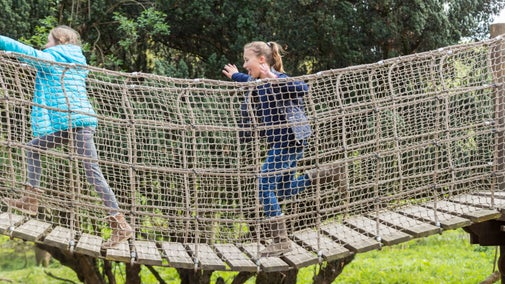
Discover more at Belton
Find out everything you need to know about visiting Belton, including how to get here, things to see and do on your visit, and more.

Sometimes described as the 'perfect' English country house estate, Belton was built in the late 17th century by 'Young' Sir John Brownlow. Home to the same family for nearly 300 years, Sir John's heirs also made their mark on Belton, commissioning the finest designers and craftsmen of their age.
The mansion fully reopens 1 March with a display titled ‘Artistic Journeys; Crafting a New Narrative.’ This will be a self-led celebration of arts and design, exploration of global influences, and discovery of stories for all visitors. This will include the display of previously unseen items in the collection. From March, the mansion will be open Thursday to Monday, with Spotlight on Conservation held on Tuesdays and Wednesdays. In the meantime, a Basement Experience will run every day at Belton until 28 February.
Step back in time and discover more about the food that graced the dining tables at Belton over the centuries during the special interactive sensory tours below stairs. Find out how the ingredients arrived at Belton and how meals were prepared here in the kitchens.
* Runs Monday 13 January to Friday 28 February. Tour slots take place between 10.30am and 3.15pm. Some tickets are kept aside for walk-ins.
The gardens are open year round. Discover more about Belton’s unique and exotic plant collection and learn about a different side to Belton’s botanical history within the Conservatory. Overlooking the Italian Garden, Belton’s Conservatory is home to a collection of lush foliage and exotic blooms. It was designed by Jeffry Wyatville in 1810 and built in 1820 and was the first garden building of its type in England. It remains open every day during garden opening hours.
The Marble Hall was designed as the main entrance and the first in a procession of grand rooms. In the Victorian period, its function changed dramatically into an area of familial comfort, with large rugs, plants, and seating in place.
Look out for the overmantel carvings in the Marble Hall, from c1688, one side is attributed to Grinling Gibbons and the other is carved by Edmund Carpenter.

Walking through the house you'll come across the Chapel Drawing Room, which is a rare example of decor that dates from the building of the house in 1683-1685. If you had visited Belton in the 1690s you would have been in no doubt that this was one of the most opulent rooms in the house. What is now subdued gree/blue marbling was originally bright lapis blue with white and gold flecks. No doubt Lord Tyrconnel enjoyed looking out to Bellmount Tower which he had built as part of significant alterations to the grounds in his later year.

Upstairs you'll discover the Chinese Bedroom with wallpaper that was hand painted in China and intended for export. The pink background, now faded, and the inclusion of figures were stylistic adaptations to appeal to European consumers. This paper was hung in 1830 but probably made much earlier.
By the 19th century a Chinese bedroom or drawing room had become an almost expected element of the British country house. They were associated with women, where the ladies of the house would receive members of their family and more intimate friends.
Before heading back downstairs you'll visit the Windsor Bedroom. This room is named in honour of Belton's association with Edward VIII, the british monarch who abdicated in 1936 so he could marry Mrs Wallis Simpson, a divorcee. Peregrine Cust, 6th Baron Brownlow was a close friend and Lord-in-waiting to the King. He accompanied Mrs Simpson to France at the height of the scandal and, to protect the monarchy, he encouraged her to renounce her relationship with Edward.
Belton's collection tells a story rich in global history and our future work will focus on bringing those stories to life.
Explore the house at your leisure and, while there is no particular route to follow, you may find it useful to pick up our new guide to Belton House, with information on all the rooms in the house. If you would like to take it home as a souvenir, we ask for a £2 donation to cover printing costs.

Find out everything you need to know about visiting Belton, including how to get here, things to see and do on your visit, and more.

Take a closer look at 400 years of ambitious collecting, where treasures include English portraiture, Oriental ceramics and a restored lapis lazuli cabinet.

Rest and refuel in a historic setting or treat yourself to something special to take home. Find out about our dog-friendly café and other places to eat and shop.

Explore the gardens at Belton, including the Italian Garden, a Conservatory and a Dutch Garden with formal bedding schemes. Whatever time of year you visit, the shifting seasons provide a great variety of colour and wildlife to see.

Explore 1,300 acres of parkland at Belton and find out more about the wildlife you may see along the way, including the herd of historic fallow deer.

Explore our fun family day out ideas, including our indoor play area and outdoor adventure playground. Make the most of your day out with the kids at Belton.

Historic buildings are a treasure trove of stories, art and collections. Learn more about their past and plan your next visit.

Explore the diverse range of houses and buildings in Nottinghamshire and Lincolnshire, from historic churches and country houses to a Victorian workhouse.